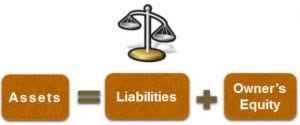
In most cases, this is the correct entry to book, however, in certain transactions we are paying upfront for the right to use an asset or receive a service over a defined period of time. Under the cash basis an organization would immediately record the full amount of the purchase of a good or service to the income statement prepaid insurance journal entry as soon as the cash is paid. Each month, an adjusting entry will be made to expense $10,000 (1/12 of the prepaid amount) to the income statement through a credit to prepaid insurance and a debit to insurance expense. In the 12th month, the final $10,000 will be fully expensed and the prepaid account will be zero.

Journal Entry for Prepaid Insurance
As time progresses and the benefits of the assets are gradually realized, the asset is amortized, and the corresponding amount is recognized as an expense on the balance sheet. Unexpired or prepaid expenses are the expenses for which payments have been made, but full benefits or services have yet to be received during that period. In this example, let’s assume we purchase a 12-month cyber insurance policy for $1,800 on January 1st, 2023. The term of the policy is only 12 months, therefore we will not recognize any long-term prepaid asset. To recognize the expense of the policy evenly over the policy term, divide the total policy amount of $1,800 by 12 for a monthly insurance premium expense of $150.

How much are you saving for retirement each month?
In other words, prepaid expenses are expenditures paid in one accounting period, but will not be recognized until a later accounting period. Prepaid expenses are initially recorded as assets, because they have future economic benefits, https://www.bookstime.com/ and are expensed at the time when the benefits are realized (the matching principle). At the payment date of prepaid insurance, the net effect is zero on the balance sheet; and there is nothing to record in the income statement.
Benefits of Prepaid Expenses
The first step in recording a prepaid expense is the actual purchase of the expense. For example, if you pay your insurance for the upcoming year, you would first pay the expense, making sure to record it properly. Deferred revenue should be recorded as an asset and classified as a current asset if it is expected to be realized in the next 12 months. If it is not expected to be realized in the next 12 months, it should be classified as a long-term asset.
What is considered a prepaid expense?
Rather, any prepaid rent pertaining to a long-term lease would be rolled into the ROU asset balance recognized on the balance sheet. The most-common examples of prepaid expenses in accounting are prepaid rent from leases, prepaid software subscriptions, and prepaid insurance premiums. Below you’ll find a detailed description of each one as well as detailed accounting examples for each. Under the accrual method, no expense is recorded until it is incurred. In layman’s terms, prepaid expense is recognized on the income statement once the value of the good or service is realized, i.e, the service or good is delivered. These are both asset accounts and do not increase or decrease a company’s balance sheet.
- Want to learn more about recording financial transactions and doing accounting for your small business?
- Whereas, in the company’s balance statement, the closing balance of the current prepaid insurance account will show a balance of $7,500 ($10,000- $2,500) for the quarter ending.
- In this blog, we’ll break down what prepaid expenses are, why they are crucial for your financial statements, and how to handle them correctly.
- This can be a challenge, particularly if the company has to make monthly payments.
- All 12 months from Jan’20 to Dec’20 will be charged in each period against the prepaid expense account to reduce the prepaid account to zero by end of the year.
- By gradually expending them over the period in which they are utilized, companies can present a more accurate picture of their financial performance.
Additionally, expenses like taxes and leased equipment can also be considered the same. The balance sheet lists prepaid expenses under current assets, which are expected to be consumed or utilized within a year. This starts with determining if the amount should be expensed over multiple accounting periods, how much should be expensed each period, and for how long. For example, if you prepay accounting fees for $1,650, to cover the next six months, you would need to expense $275 each month for six months.
Prepaid Expense: Definition and Example
Ultimately, by the end of the subscription term, both the long-term and short-term portions of the prepaid subscription account balances will be zero. Leases can be a great example of situations where a contract may require a lessee to pay a portion of their obligation prior to or at lease commencement. Note that this situation is different from a security deposit which is generally refundable. In double-entry bookkeeping, every transaction affects two accounts equally at the same time, where one account is debited and the other is credited.
They are recorded as current assets, representing payments made in advance for future benefits. In short, these expenses are payments made in advance for goods or services to be received in the future. They are initially recorded as assets and gradually expensed over time. Examples include insurance premiums, rent, subscriptions, and utilities. Prepaid expenses represent expenditures that have not yet been recorded by a company as an expense, but have been paid for in advance.
- A prepaid expense is any expense you pay that has not yet been incurred.
- Another mistake is recording prepaid expenses as expenses when they should be recorded as assets.
- Some common types of insurance include life, health, automobile, homeowners, and renters insurance.
- The landlord requires that Company A pays the annual amount ($120,000) upfront at the beginning of the year.
- Repeat the process each month until the policy is used and the asset account is empty.
- Rather, any prepaid rent pertaining to a long-term lease would be rolled into the ROU asset balance recognized on the balance sheet.

Deixar Um Comentário